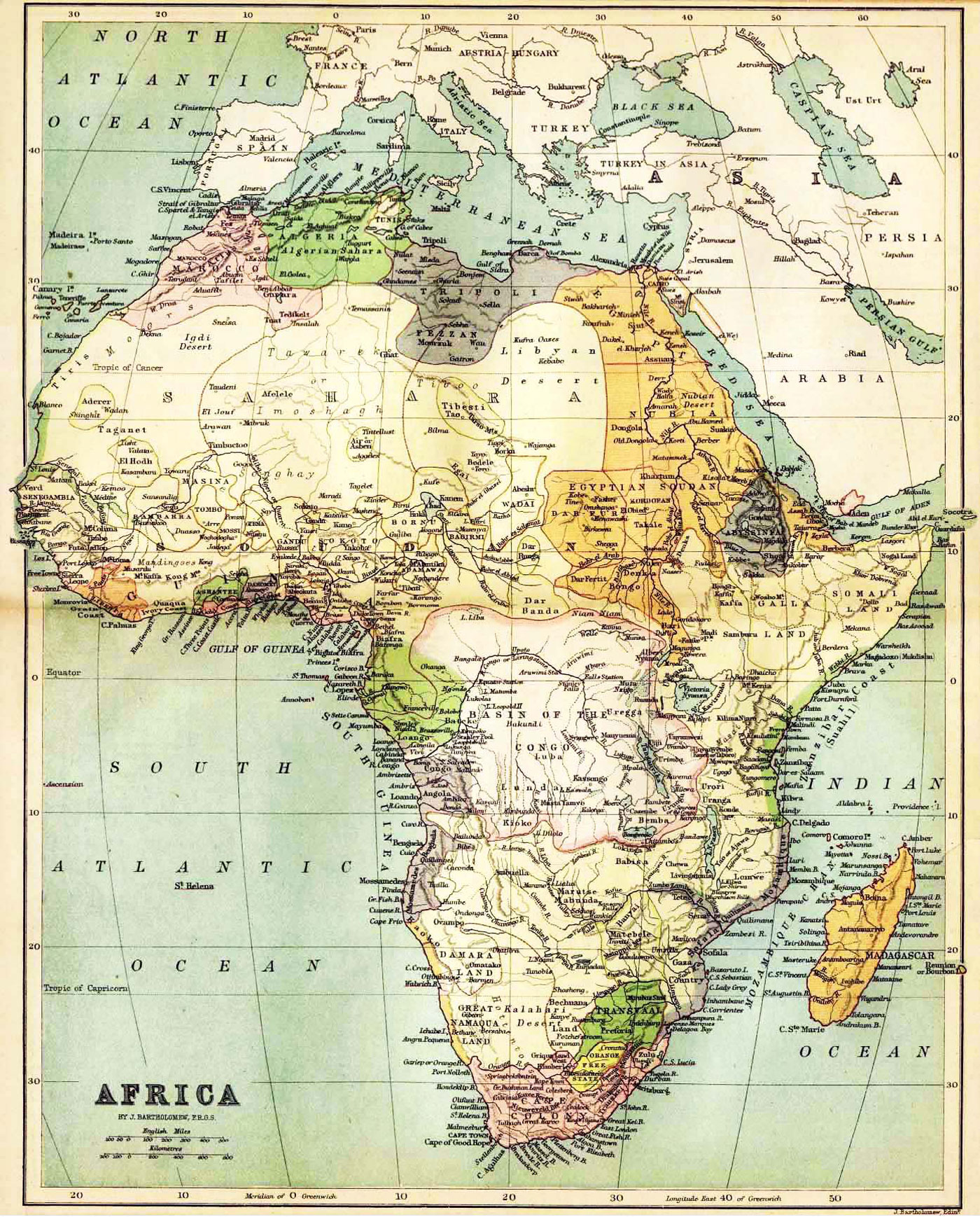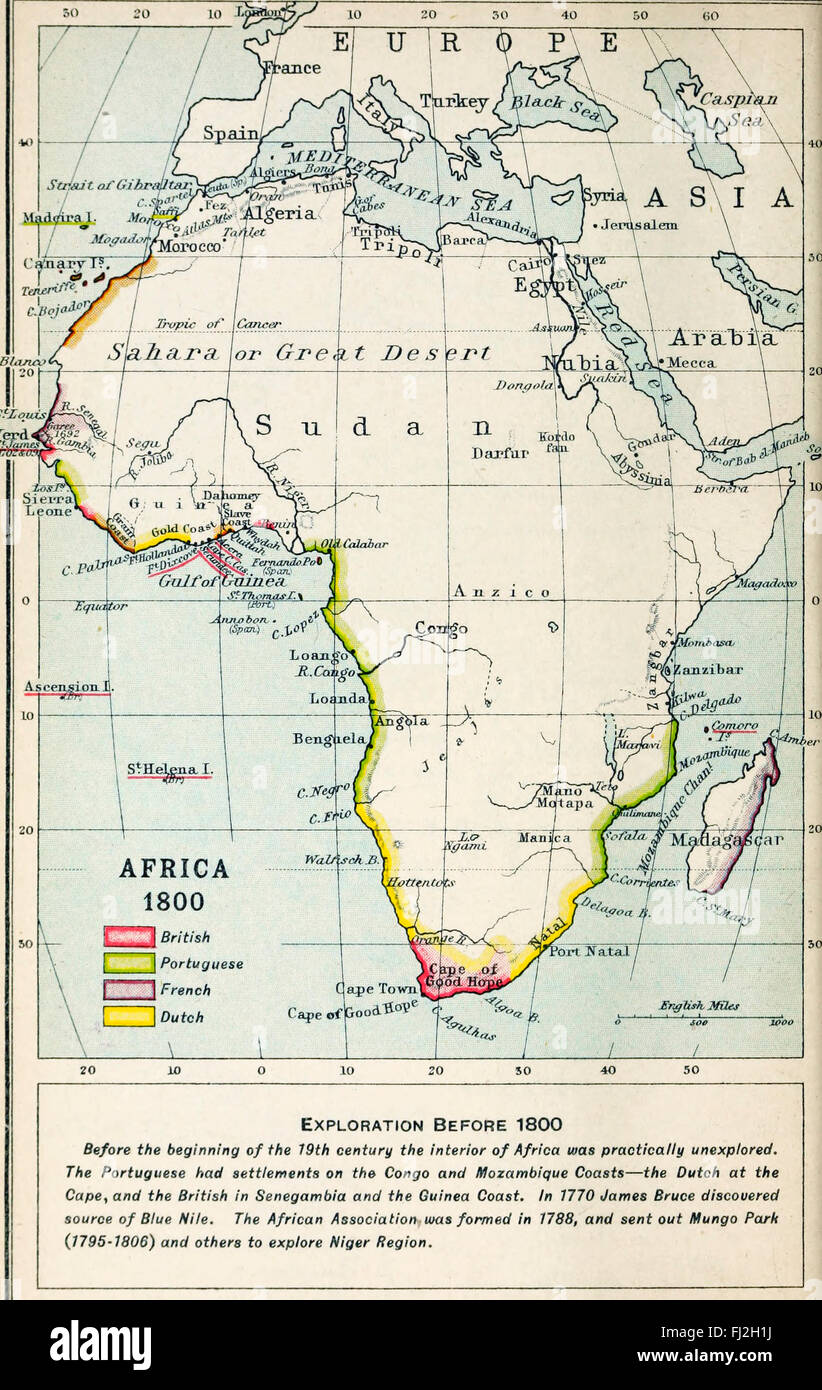Could a single map, etched centuries ago, truly encapsulate the vast, complex reality of a continent? The answer is a resounding no, yet antique maps of Africa, though incomplete and often shaped by the biases of their time, offer invaluable windows into the past and the evolution of our understanding of the continent. These maps, painstakingly crafted and disseminated, provide a tangible link to a world grappling with exploration, colonialism, and the burgeoning desire to chart the unknown.
Consider an antique map engraved by Russell, possibly from a Guthrie atlas dating back to the c. period. Such maps often reflect the limitations of their time. The center of Africa remained largely unexplored, and therefore, the information included might well be derived from hearsay, traveler's tales, and educated guesses. Even with these limitations, these maps offer a snapshot of the geographical knowledge or lack thereof of the era. They can feature, for instance, the range of mountains and sometimes indicate the source of the Nile, showcasing the persistent quest to locate the origins of this crucial river. These maps were not just geographical documents; they were also products of the prevailing perspectives and power dynamics of the time.
To truly grasp the context, it is crucial to delve into the cultural and social landscape of Africa during the 1700s. The continent was, in essence, a tapestry of diverse societies, each with unique organizational structures, governmental systems, labor practices, social hierarchies, and legal codes. Exploring these facets offers a more comprehensive understanding of the continent's rich heritage, and also the profound effects European contact had on these societies.
- Express Your Heartfelt Love Long Love Letters From The Heart For Her
- Is Jordan Petersons Daughter Really A Psychologist Uncovering The Truth
| Aspect | Details |
|---|---|
| Organizational Structures | Varying forms existed: centralized kingdoms (e.g., Asante, Dahomey), decentralized societies with village-based governance, and confederations of chiefdoms. |
| Government | Monarchies, chiefdoms, republics, and oligarchies. Power structures ranged from absolute monarchies with centralized control to more decentralized systems with councils of elders or chiefs. |
| Labor | Agricultural societies reliant on family labor, with systems of servitude and slavery. Trading networks, crafts, and specialized labor also existed. |
| Society | Complex social hierarchies. Kinship played a vital role in social organization, with clans and lineages forming the basis of communities. Roles based on age, gender, and social status determined daily life and influence. |
| Laws | A mix of customary laws passed down through generations and codified laws, often based on religious and social norms. Conflict resolution often relied on elders, community councils, and traditional courts. |
| Trade | Thriving trade networks were spread out across the continent, with items like gold, salt, and enslaved persons. These systems fostered economic development and connected diverse communities. |
| Religion | Traditional African religions were followed, including belief in ancestors, spirits, and deities. The spread of Islam, particularly in West Africa, and Christianity in Ethiopia led to an intricate blend of faiths. |
For more detailed information on this topic, explore the Britannica, which provides in-depth coverage of various African cultures during the 1700s, offering valuable insights into their societal and governmental structures.
Shifting our focus, let's consider the country of Guinea, a nation in West Africa. A comparative study using an 18th-century map and a modern map exposes dramatic shifts in Guinea's structure and situation. During the 1700s, Guinea comprised multiple kingdoms and chiefdoms, lacking the unified character it possesses today. The political contours were constantly fluctuating. The area's economy was largely influenced by the slave trade, and European powers fought to gain control of the region's resources. Fast forward to the present, and Guinea is an independent republic with clearly defined borders. Its economy is driven by mining, notably bauxite, and agriculture. Colonial legacies and the repercussions of independence have profoundly reshaped its trajectory.
The maps themselves are relics of a time when the exploration of Africa was in its initial stages, they reflect a world in which European powers were just starting to exert influence. The arrival of European traders after 1490 would significantly alter Africa as those traders became ambitious and turned to colonization, thus the empires identified above were all destroyed by the influence of European powers. These maps dont just show geography; they display the emerging colonial interests and the nascent scramble for Africa. They capture the initial phase of a transformation that would reshape the continent. The detailed political map from 1897 and its reprint from 1899 showcase the era of European influence. In 1895, a group of renegades led by Captain Leander Starr Jameson entered the Transvaal with the intention of sparking an uprising on the Witwatersrand. The political map below shows Africa before colonial partitions between European countries. By the start of the 1880s, only a tiny part of Africa was under European rule, and that area was restricted mainly to the shore and a short distance inland along major rivers such as the Congo and the Niger.
- Uncovering The Truth Does Megan Leavey Tie The Knot
- Frankie Muniz A Father Of 17 The Surprising Truth Behind The Rumor
These maps also are valuable resources when studying specific expeditions, such as the journey of Mungo Park in West Africa. Park's route, from the Gambia River to the Niger, provides a valuable perspective on the geography and the challenges faced by European explorers. Maps also showcase the discoveries of other explorers like Brown, Bruce, and Vaillant, contributing to a richer understanding of the era's geographical knowledge.
One must acknowledge the limitations of these maps. Many were shaped by European perspectives and often lacked detailed information about the interior of the continent. Much of the center of Africa had not been explored, and the maps often relied on hearsay. This is not to dismiss them, but to approach them with a critical eye. The absence of information is as significant as the presence of it; the blank spaces on the map speak volumes about the limits of exploration and the incomplete understanding of the African continent.
Throughout the 1800s, these maps played a key role in representing the continent. They highlighted colonial territories and geographical features, serving as valuable historical documents. These pieces of cartography are not just aesthetically pleasing; they are imbued with historical significance. They tell stories about the interaction between Africa and the rest of the world, the emergence of colonial territories, and the ongoing quest to understand and chart the continent. They remain a vital resource, enabling us to analyze the political and natural landscape of the colonial era.
It is vital to bear in mind the broader context when studying these maps. By the time the Cape changed hands during the Napoleonic Wars, humanitarians were vigorously campaigning against slavery. In 1807, they succeeded in persuading Britain to abolish the trade, and British antislavery ships soon patrolled the western coast of Africa. The maps themselves can show the way in which Africa was divided before colonization.
A thorough examination of these maps helps to reconstruct the past. They are key to understanding Africa's colonial past. It is through these maps that we can appreciate how the European powers interacted with Africa, which led to colonization.
Moreover, in examining the 1800s maps of Africa, the maps from the digital collection contains images of maps. These maps provide insights into how European powers gradually gained control over the continent. These maps document the transformation of Africa's political landscape.
The study of these antique maps is not merely a study of geography but of power, perception, and the evolution of our understanding of the world. By studying these documents, we gain a more comprehensive grasp of a pivotal period in human history. Interactive detailed political maps from ancient times to our days can be a valuable resource for exploring these transformations. Openhistoricalmap is an interactive map of the world throughout history, created by people like you and dedicated to the public domain. Old maps of Africa on oldmapsonline are invaluable resources.
The Fon people developed in the early 17th century on the Abomey plateau and rose to become a regional force in the 18th century by expanding south to conquer crucial towns like Whydah on the Atlantic, showcasing the shifting power dynamics within the continent. The maps tell of the spread of empires, which were then overtaken by European influence. They provide a dynamic perspective on the continent's past, showing both the impact of European colonization and the resilience of the societies that lived there.
In conclusion, the antique maps of Africa offer a fascinating insight into the continents past. From the maps that depicted the source of the Nile to the detailed illustrations of the European colonies, these cartographical masterpieces allow us to explore the history of Africa. They serve as a valuable resource for understanding how this vast continent was perceived and explored in the past. These maps give us a crucial perspective on how the world has changed over time.



Detail Author:
- Name : Waino Gerlach
- Username : alanis.greenfelder
- Email : prolfson@zemlak.com
- Birthdate : 2000-05-27
- Address : 53902 Kuhic Mountains Apt. 928 Lake Veda, UT 17022-6580
- Phone : (740) 254-8049
- Company : Hills, Kirlin and Ruecker
- Job : Pharmacy Technician
- Bio : Facere quis voluptates eaque soluta explicabo. Nihil ut commodi et maxime earum officiis minus doloribus. Laudantium molestiae in nemo quia earum qui. Delectus velit sapiente possimus quo.
Socials
tiktok:
- url : https://tiktok.com/@elmokoelpin
- username : elmokoelpin
- bio : Qui minus et quisquam dicta voluptates fugit.
- followers : 4117
- following : 676
twitter:
- url : https://twitter.com/elmo5568
- username : elmo5568
- bio : Aspernatur pariatur culpa ducimus quia est. Odit totam unde soluta tenetur eveniet doloremque nostrum. Distinctio maiores aut a.
- followers : 2312
- following : 1284
instagram:
- url : https://instagram.com/elmokoelpin
- username : elmokoelpin
- bio : Consequatur et autem esse amet. Corporis minima suscipit dolores. Ipsum doloribus est vel.
- followers : 6364
- following : 2796
linkedin:
- url : https://linkedin.com/in/ekoelpin
- username : ekoelpin
- bio : Qui ut sunt officia maiores harum nulla.
- followers : 5185
- following : 1944